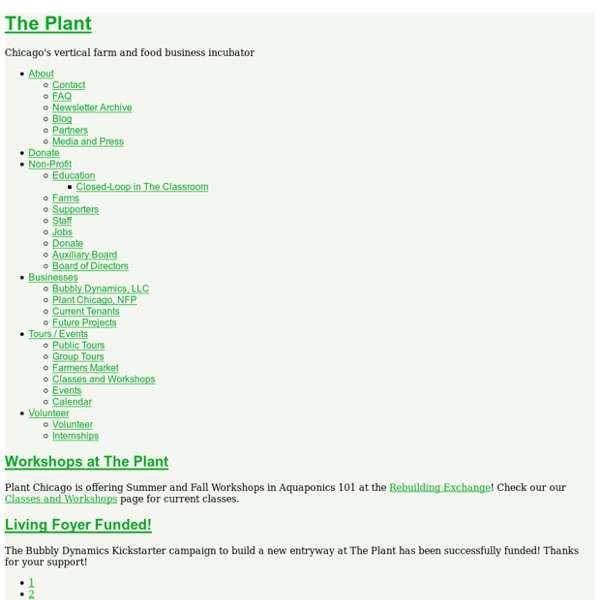



Food Farmer Earth Bill Webber and Bill Bailey are two longtime residents of Cordova, Alaska, whose livelihoods, and way of life revolve around the fishing industry. As we see in the video, both Webber, a third generation Alaskan fisherman, and Bailey, one of the founders of Copper River Seafoods, a local seafood processing plant, harbor a deep respect for their way of life, and for the natural environment. Read the full post on Cooking Up a Story: Food Farmer Earth - a journey of wide discovery about our Cyberfarm | Home In the 21st century, it is unconscionable that anyone should go hungry, that we should waste as much food as we do, or that we should be using so much fresh water for old fashioned agricultural practices, especially given our advanced agricultural knowledge and technical capabilities. One of the largest food problems is the centralized nature of production and the costly expense, financial and environmental, of distribution. Access is everything, and by giving an option to have food grown locally in an efficient and sustainable manner, we can be a part of ushering in a new agricultural paradigm. Cybernated Farm Systems, LLC, (CFS), is a socially conscious company dedicated to the standards of CSR (Corporate Social Responsibility). Contact Us. Email Support (24x7)
Meet The Farmer TV - a local program about Food From The Farm to The Plate Real Live Vertical Farm Built In South Korea, Churning Out Lettuce Image Credit Rural Development Administration We have been showing conceptual vertical farms for years, but in Suwon, South Korea they have one working and producing vegetables. It is a little three storey demonstration project in a nondescript building (image here), operating much like Dickson Despommier has described in his book, The Vertical Farm, right down to the airlocks and sterility he suggests is required. Fabian Kretschmer and Malte E. Every person who steps foot in the Suwon vertical farm must first pass through an "air shower" to keep outside germs and bacteria from influencing the scientific experiment.....Heads of lettuce are lined up in stacked layers. The authors tour many of the vertical farms that we have shown on TreeHugger, and note what has traditionally been considered the major difficulty: The main problem is light -- in particular, the fact that sunlight has to be replaced by LEDs. But that is no longer necessarily true. The drums are stacked three high,
Vertical Farms The current 3.3 billion global urban population is expected to grow to 5 billion by 2025... Today our agricultural footprint is the size of South America...what will it be tomorrow... Source EDITT Tower (“Ecological Design In The Tropics”) is being built in Singapore with the financial support of the National University. Source Mithun Architects in Seattle designed a "Center for Urban Agriculture" -- an integration of crops and livestock onto a 7.2 acre urban plot. Buckminster Fuller Challenge Clepsydra Urban Farm by Bruno Viganò & Florencia Costa. Source WORKac’s version of vertical farming combines farmers’ housing in a series of stepped terraces with a farmer’s market and public space below. An Urban Garden. Source Höweler + Yoon Architecture and Squared Design Lab proposes to build a vertical algae-powered bioreactor on the downtown Boston Filene's site.The structure would be made of prefabricated modules, or "eco-pods," containing materials to manufacture biofuels. Source Source Source 1.